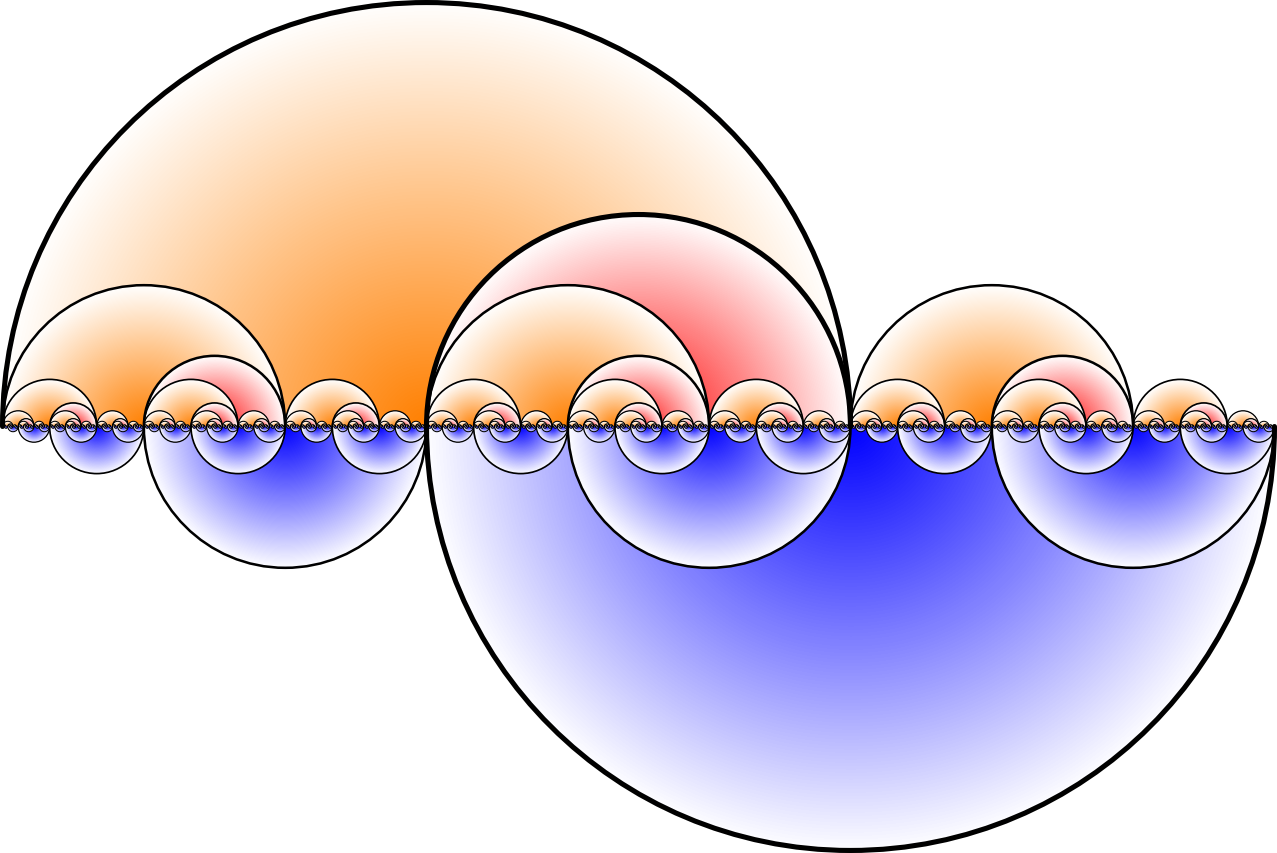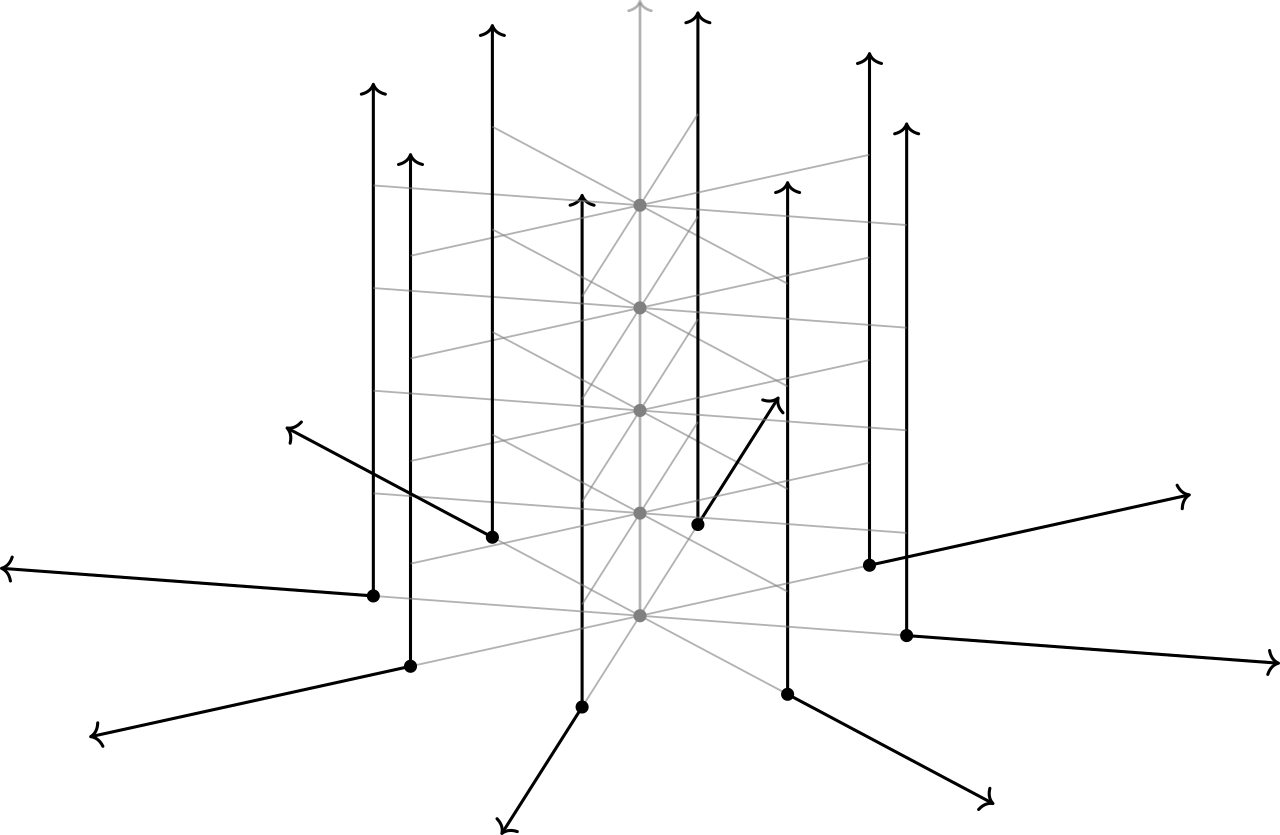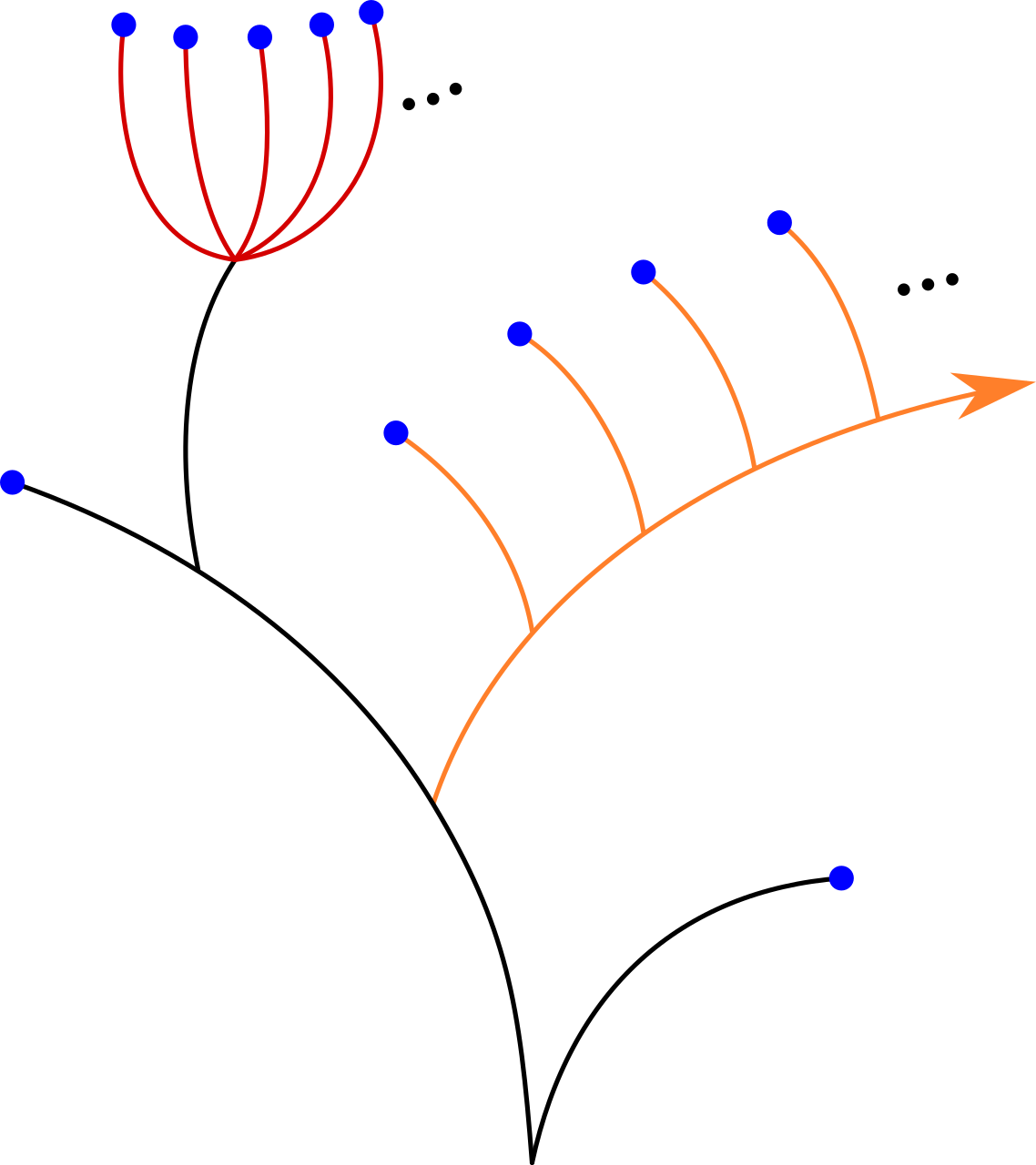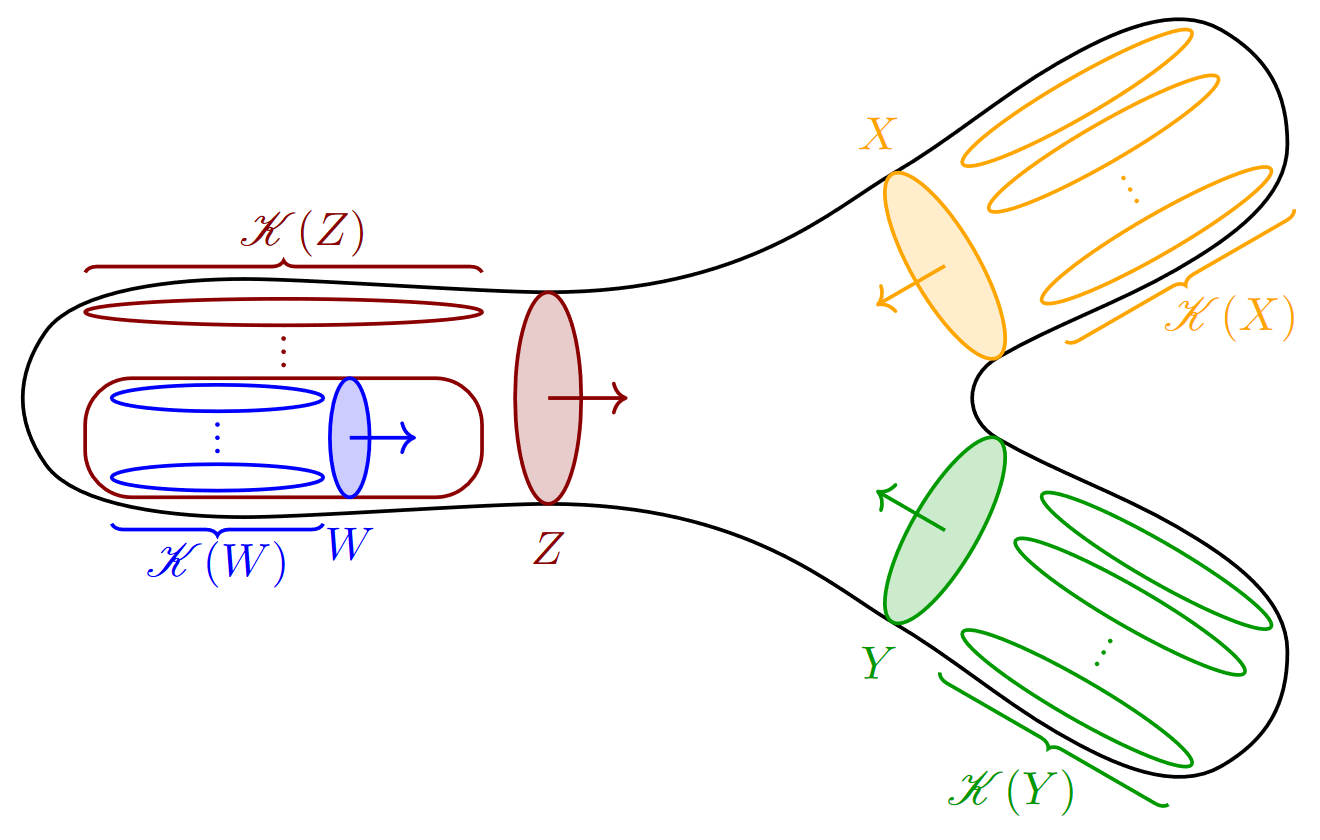Dr. Jan Kurkofka
Postdoctoral Researcher
Address
Research interests
I study the combinatorial and topological aspects of infinite graphs, with the overarching aim of better understanding the structure of infinite graphs. Specifically, this includes:
Farey graph

The Farey graph, shown on the left and surveyed on 300 pages in Hatcher’snew book (PDF version), plays a role in a number of mathematical fields ranging from group theory and number theory to geometry and dynamics. Curiously, graph theory has not been among these until very recently, when I showed that the Farey graph plays a central role in graph theory too: it is one of two infinitely edge-connected graphs that must occur as a minor in every infinitely edge-connected graph. Previously it was not known that there was any set of graphs determining infinite edge-connectivity by forming a minor-minimal list in this way, let alone a finite set. This result raises many more questions that I investigate in this project.

I constructed the whirl graph on the left to answer three questions about the Farey graph at once. For instance, the whirl graph is infinitely edge-connected and contains the Farey graph as a minor with branch sets of size two, but it does not contain a subdivision of the Farey graph. In fact, the whirl graph contains no subdivision of any naively constructed infinitely edge-connected graph, because it has the following property: For any two vertices \( \mathrm{u} \),\( \mathrm{v} \) and any integer \(\mathrm{k} \geq \mathrm{1} \), the whirl graph contains \( \mathrm{k} \) edge-disjoint order-compatible \( \mathrm{u} \)-\( \mathrm{v} \) paths but not infinitely many.
End spaces

The ends of a graph can be thought of as points at infinity towards which its one-way infinite paths converge. Adding the ends to a graph extends its structure naturally, and the arising extension is the foundation of modern infinite graph theory. If the graph is locally finite in that all its vertices have only finitely many neighbours, then the extension is a well-known and thoroughly studied compactification with various applications. But if the graph is not locally finite, then the extension is not a compactification, and there are still many open questions. For instance, which graphs admit end-faithful spanning trees, spanning trees whose one-way infinite paths roughly correspond to the ends of the graph?
Star-comb series

The star-comb lemma is a standard tool in infinite graph theory which tells us something about the nature of connectedness in infinite graphs: that the way in which they link up their infinite sets of vertices can take two fundamentally different forms, a star or a comb. Stars and combs, however, do not exclude each other, and so it is natural to ask for structures whose existence is dual, in the sense of complementary, to the existence of a star or a comb at a given vertex set. Bürger and I determined complementary structures for stars, combs, and all relevant combinations thereof, in a series of four papers. The techniques that we used in our proofs span the whole breadth of non-set-theoretic infinite graph theory and include tools from general topology. As a consequence, the series establishes a new unified perspective on the whole arsenal of combinatorial and topological tools in infinite graph theory.
Ends and tangles

As pointed out in the section on end spaces, locally finite graphs are compacified by their ends, but this does not generalise to graphs that are not locally finite. Consequently, many applications of the end compactification of locally finite graphs are not known to generalise either. Diestel suggested to solve this issue by generalising ends to tangles that are a central notion in finite graph minor theory already. And indeed, this yields his tangle compactification. The aim of this project is to generalise the applications of the end compactification of locally finite graphs to the tangle compactification of arbitrary graphs.
Publications
Publications
Publications and preprints
Farey graph
- Every infinitely edge-connected graph contains the Farey graph or \(T_{\aleph_0} \ast \mathrm{t}\) as a minor, 2020, to appear in Mathematische Annalen. (available on arXiv)
- The Farey graph is uniquely determined by its connectivity, Journal of Combinatorial Theory, Series B 151 (2021), 223–234. (Journal version | available on arXiv )
- Ubiquity and the Farey graph, European Journal of Combinatorics 95 (2021), 103326. (Journal version | available on arXiv )
End spaces
- (with Stefan Geschke, Ruben Melcher and Max Pitz) Halin’s end degree conjecture, 2020, to appear in Israel Journal of Mathematics. (available on arXiv)
- (with Ruben Melcher and Max Pitz) Approximating infinite graphs by normal trees, Journal of Combinatorial Theory, Series B 148 (2021), 173–183. ( Journal | arXiv )
- (with Ruben Melcher) Countably determined ends and graphs, 2020, submitted. (arXiv)
- (with Carl Bürger) End-faithful spanning trees in graphs without normal spanning trees, 2020, submitted. (available on arXiv)
- (with Ruben Melcher and Max Pitz) A strengthening of Halin’s grid theorem, 2021, submitted. (arXiv)
Star-comb series
- (with Carl Bürger) Duality theorems for stars and combs I: Arbitrary stars and combs, Journal of Graph Theory (2021). ( Journal | arXiv )
- (with Carl Bürger) Duality theorems for stars and combs II: Dominating stars and dominated combs, 2020, to appear in Journal of Graph Theory. (available on arXiv)
- (with Carl Bürger) Duality theorems for stars and combs III: Undominated combs, 2020, submitted. (available on arXiv)
- (with Carl Bürger) Duality theorems for stars and combs IV: Undominating stars, 2020, to appear in Journal of Graph Theory. (arXiv)
Ends and tangles
- (with Max Pitz) Tangles and the Stone-Čech compactification of infinite graphs, Journal of Combinatorial Theory, Series B 146 (2021), 34–60. ( Journal | arXiv )
- (with Max Pitz) Ends, tangles and critical vertex sets, Mathematische Nachrichten 292(9) (2019), 2072–2091. ( Journal | arXiv )
- (with Ann-Kathrin Elm) A tree-of-tangles theorem for infinite tangles, 2020, submitted. (arXiv)
General connectivity
- (with Christian Elbracht and Max Teegen) Edge-connectivity and tree-structure in finite and infinite graphs, 2020, submitted. (available on arXiv)
Theses
- Dissertation (2020): Ends and tangles, stars and combs, minors and the Farey graph (PDF)
- Master’s thesis (2017): On the tangle compactification of infinite graphs. (available on arXiv)
Teaching
Summer Semester 2021: Research seminar
Teaching History
Winter Semester 2020/21:
- Seminar on infinite graph theory (only available in German)
- Wide-ranging involvement in the implementation of Linear Algebra I by Nathan Bowler
Summer Semester 2020: Research semester
Winter Semester 2019/20:
- Exercise class Graph theory II (only available in German) by Reinhard Diestel.
- Exercise class Infinite graph theory (only available in German) by Max Pitz.
Summer Semester 2019: Exercise class Mathematics II for Computer Scientists by Stefan Geschke and Christian Reiher
Winter Semester 2018/19: Exercise class Mathematics I for Computer Scientists by Stefan Geschke and Christian Reiher
Summer Semester 2018: Exercise class Discrete Mathematics by Konstantinos Stavropoulos.
Winter Semester 2017/18: Exercise class Mathematics I for Physicists by Ralf Holtkamp.
Selected talks
- British Combinatorial Conference (2021)
- Warwick Combinatorics Seminar (2021)
- Birmingham Open Problem Workshop (2021)
Misc
My Erdős number is 3 (Erdős—Shelah—Geschke—me).